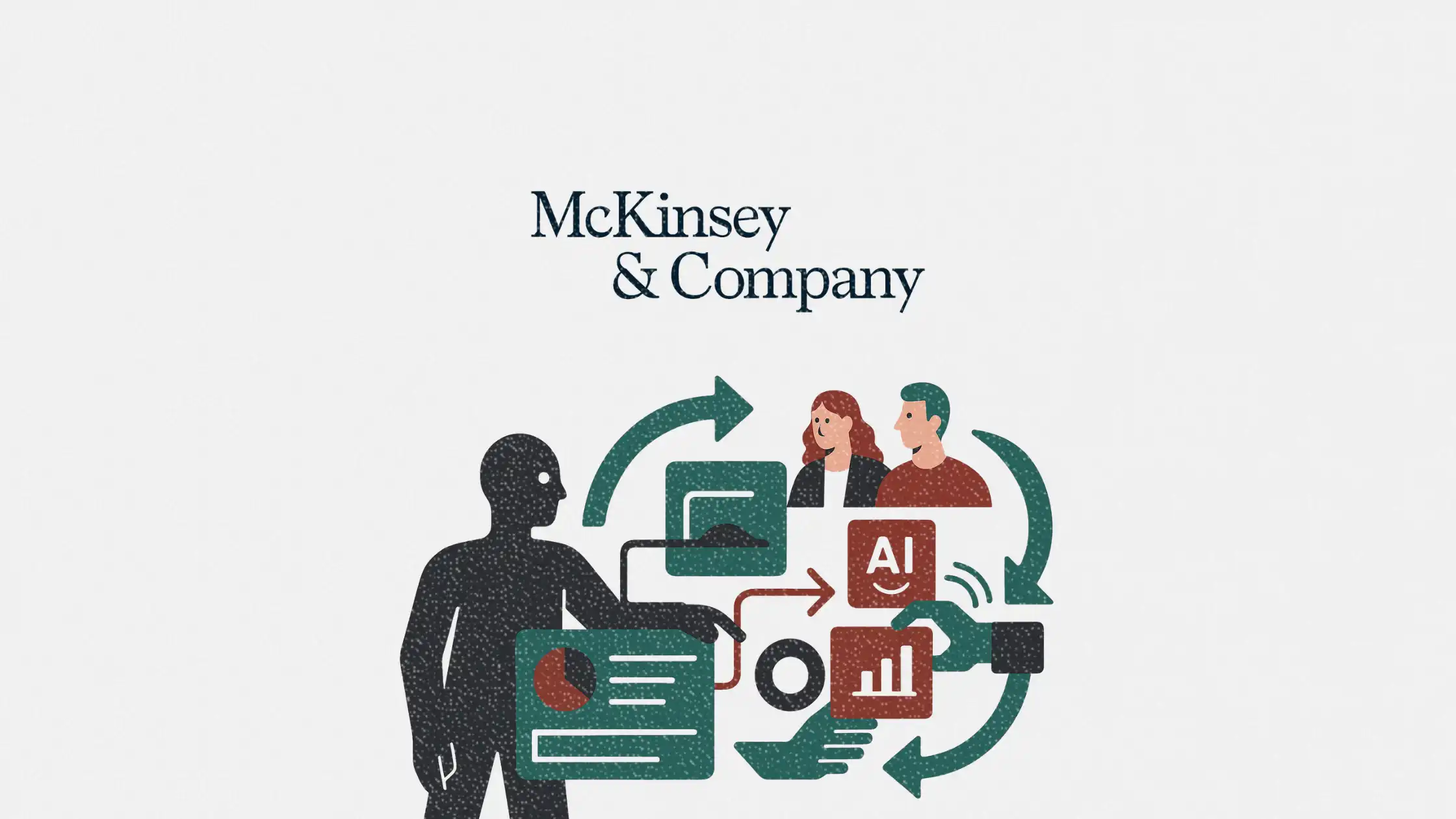Agentic AI is no longer theory according to McKinsey study
Agentic AI is moving beyond hype with real impact in marketing and sales.

AI isn’t just talking. It’s acting.
According to a new McKinsey report, a new wave of AI known as agentic AI is beginning to deliver tangible growth in marketing, sales, and customer operations. These aren’t passive assistants.
They’re task-completing, decision-making digital agents embedded into workflows—capable of reallocating budgets, tailoring offers, and rerouting inventory in real time.
This article breaks down McKinsey’s key insights for marketers, including how early adopters are using agentic AI to speed up execution, personalize experiences at scale, and restructure teams for long-term competitive advantage.
Short on time?
Here’s a table of contents for quick access:
- What’s happening with agentic AI
- Workflow over tools: why design matters
- How marketers can turn AI agents into collaborators
- Building the agent-powered growth org
- What marketers should know

What's happening with agentic AI
AI agents are now executing end-to-end tasks across marketing and sales. They optimize prices, advance leads, tailor offers, and even manage creative refresh cycles. This shift is being driven by the growing use of agentic systems: AI that acts autonomously across multi-step business processes.
While most companies are still stuck in fragmented pilots, early adopters are unlocking serious wins. According to McKinsey, some Fortune 250 brands have sped up campaign execution by 15x, reduced customer service time by 25%, and lifted customer satisfaction by over 800 percent in some cases.
One standout example is a US airline that used predictive AI to tailor compensation during flight disruptions, which led to a 59 percent drop in churn among high-value customers.

Workflow over tools: why design matters
Companies seeing impact aren’t just adding AI tools. They’re reimagining how work gets done. Agentic AI works best when embedded into full workflows, not bolted onto outdated steps. For example, rather than speeding up complaint handling, leaders use agents to predict customer issues and preemptively resolve them.
A European insurer redesigned its commercial model in just 16 weeks by embedding agents into every stage of the sales journey.
The result?
95 percent of sales calls were reviewed (up from 3 percent), call times dropped 25 percent, and frontline staff had instant access to more than 1,000 policy documents.
How marketers can turn AI agents into collaborators
Agentic AI only scales when it's treated like a partner, not a plug-in. That means assigning agents specific roles, setting performance KPIs, and tracking their evolution like you would human team members.
A top US homebuilder trained its AI agents to mimic its best sales reps using insights from 500,000 call transcripts. The company built agent “personas” with unique conversational styles and then monitored them via dashboards. The result was a tripling of appointment conversions, and some AI agents matched human reps in empathy and conversational flow.
The key is tracking new metrics like learning velocity, escalation accuracy, and conversation quality. Not just output volume.

Building the agent-powered growth org
As AI agents span marketing, sales, and service, traditional team structures are breaking down. The emerging model is cross-functional human-AI teams that work with shared data products and performance KPIs.
Some companies are setting up agent factories. These are internal hubs that standardize how agents are built, trained, and governed. Each agent has a clear role: lead orchestrator, task executor, or QA monitor.
This structure helps avoid “agent chaos” where teams duplicate efforts and lose control over performance and compliance. It also prepares the organization for a future where up to 50 percent of employees may collaborate daily with AI.
What marketers should know
Here’s what strategic marketers can do right now to stay ahead:
1. Redesign for outcomes, not tasks
Think in workflows. Don’t just apply AI to copywriting or lead scoring. Ask how agents can reshape the entire buyer journey.
2. Track what actually matters
Move past volume metrics. Measure how well AI agents adapt, personalize, escalate, and learn over time.
3. Build agent literacy across teams
Marketers, sales leaders, and CX teams all need to understand what AI agents do, how to train them, and when to intervene.
4. Prepare for long-term change
Agentic AI isn’t a one-off investment. It will shape team structures, decision-making, and even brand strategy. Start building governance and data infrastructure now.
5. Watch for creative impact
AI agents that rewrite offers or tweak pricing on the fly can unintentionally affect brand tone. Creative oversight still matters.
Agentic AI is changing the rules of growth. It’s no longer about experimenting with chatbots or testing a few automations. The brands pulling ahead are already rebuilding how marketing, sales, and service operate. AI agents are at the center. Humans are still in control.
The question isn’t what AI can do for you. It’s what outcomes you're ready to deliver with it and how you’ll make room for your people to focus on what only they can do.






